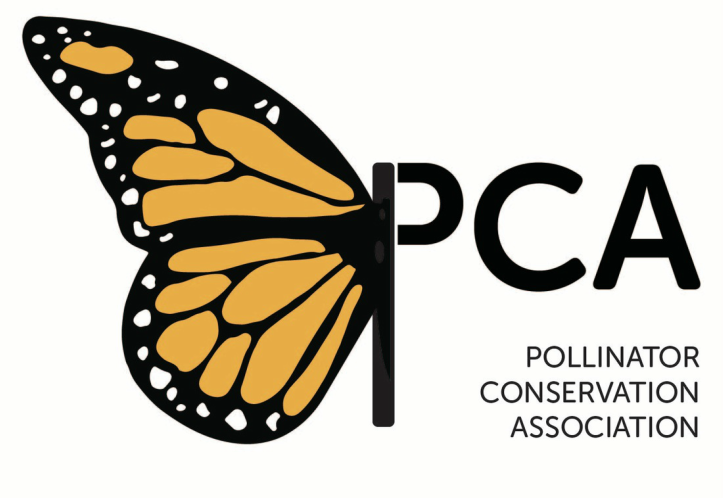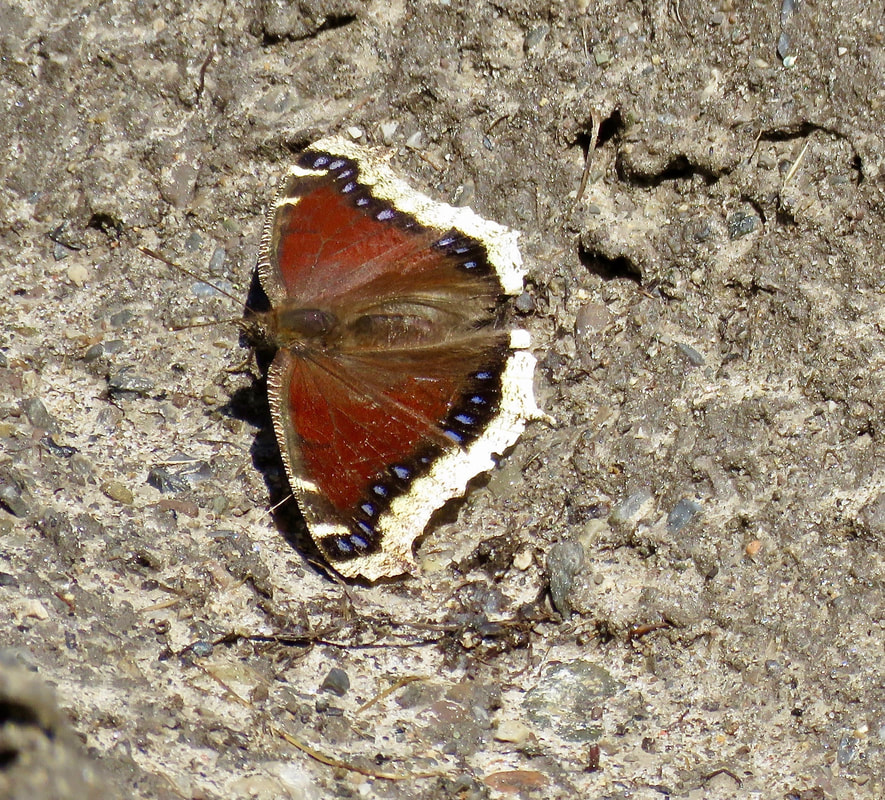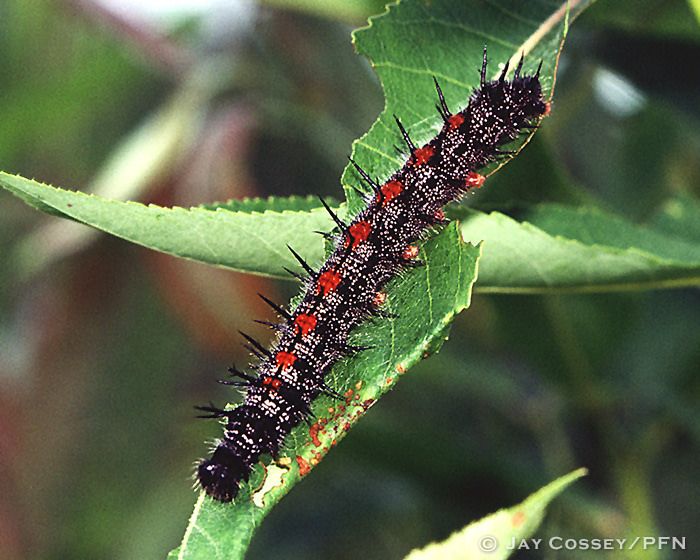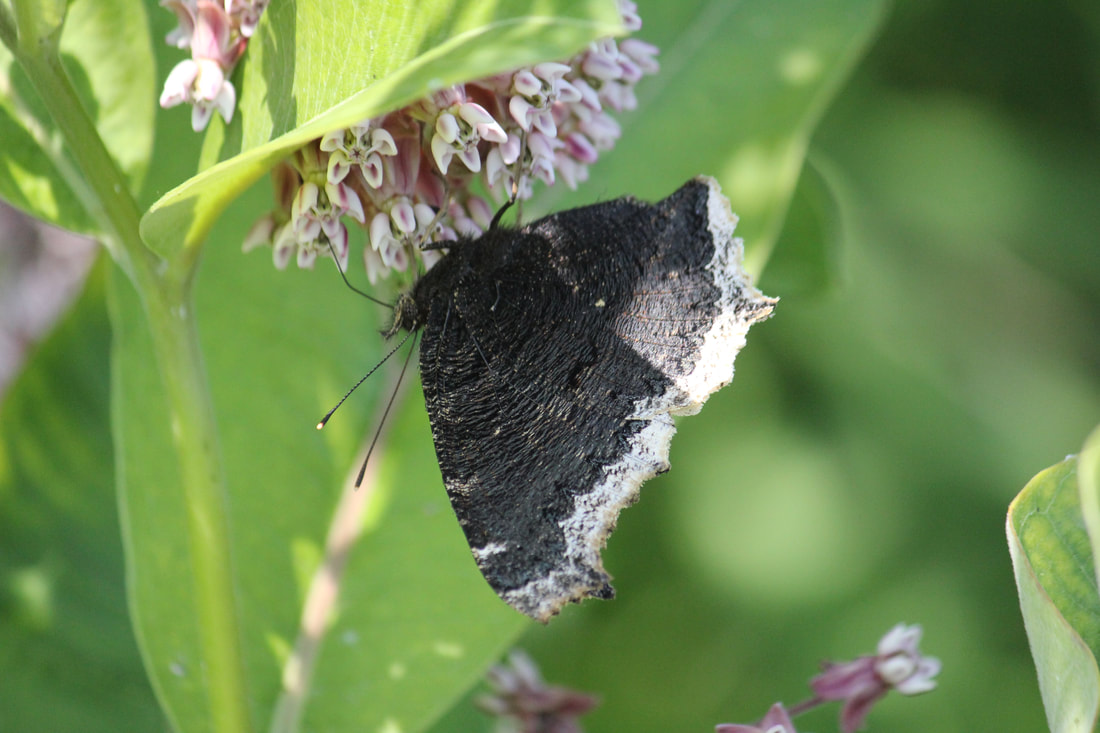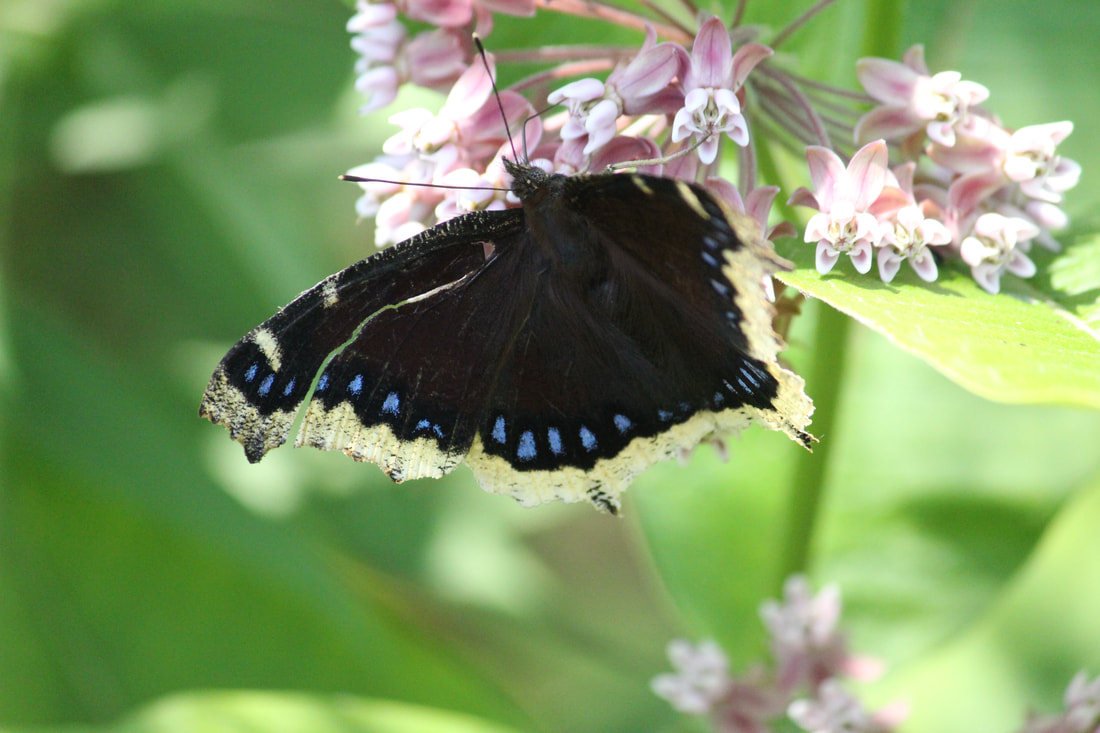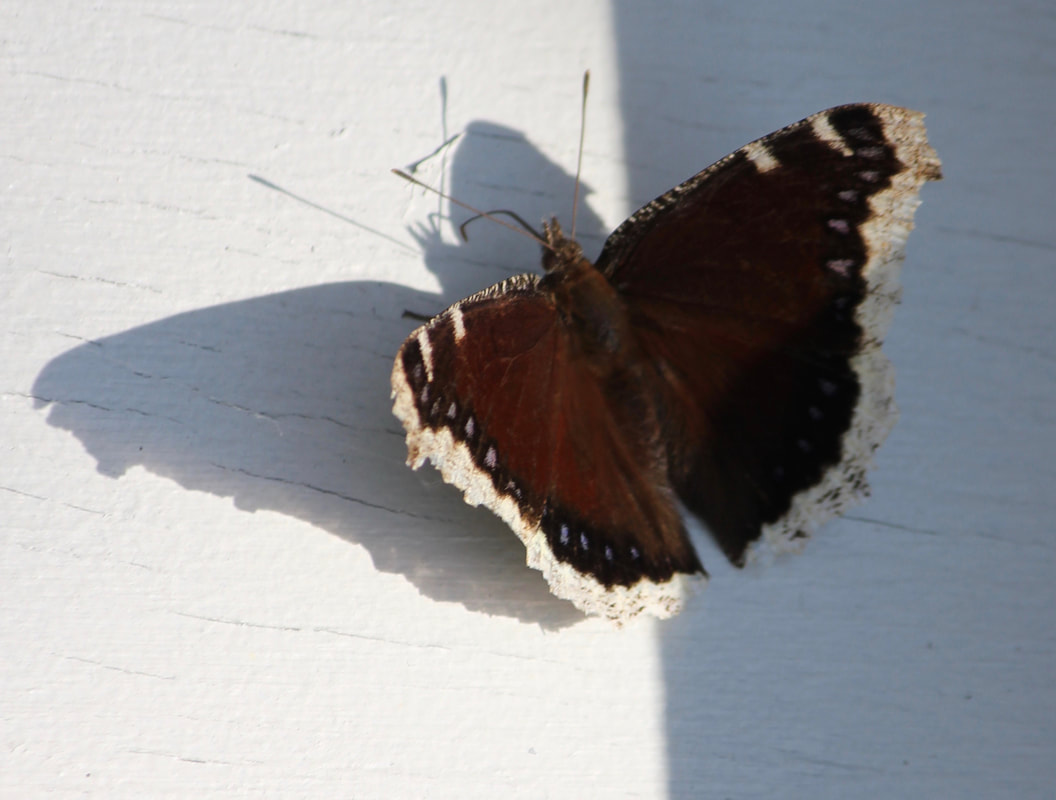Mourning Cloak (Nymphalis antiopa
This important butterfly, (aka in England as Camberwell Beauty) hibernates as an adult during winter. It will find crevices in rocks or trees, crawl under bark, or dig into leaf piles. (another good reason to leave leaf piles as they are.) It is often the first butterfly in the north that can be observed as winter passes. Usually it emerges from hibernation in late March/early April when the sun shines for a few days. It is a migrating species and is possibly the longest lived butterfly (about 12 months) Elm, Willow, and Poplar among host trees. Before flowers bloom in the spring this butterfly feeds on sap, dung, or mud for nutrients. The patterns on the butterfly are said to resemble "mourning garments." The one pictured here is probably an older butterfly newly unhibernated, but it survived the winter. Mating takes place between early spring and June.
From Mass Audubon: Mourning Cloaks emerge from hibernation in April and mate through May. Eggs hatch in 10 to 12 days and the young larvae are gregarious and feed in a communal web. The mature larvae wander before pupating, and emerge from the chrysalis in about 11 days, usually in early July. Although this species may be seen throughout the summer, most enter aestivation shortly after emergence from the chrysalis (Young 1980), lying dormant in a hollow tree or similar place until fall when a portion of the population migrates southward (Teale 1955). The remaining adults spend the fall feeding before they re enter hollow trees and woodpiles to hibernate through the winter. The adult‘s lifespan of over ten months is extremely long for a temperate butterfly.
From Mass Audubon: Mourning Cloaks emerge from hibernation in April and mate through May. Eggs hatch in 10 to 12 days and the young larvae are gregarious and feed in a communal web. The mature larvae wander before pupating, and emerge from the chrysalis in about 11 days, usually in early July. Although this species may be seen throughout the summer, most enter aestivation shortly after emergence from the chrysalis (Young 1980), lying dormant in a hollow tree or similar place until fall when a portion of the population migrates southward (Teale 1955). The remaining adults spend the fall feeding before they re enter hollow trees and woodpiles to hibernate through the winter. The adult‘s lifespan of over ten months is extremely long for a temperate butterfly.
From Butterflies and Moths of North America
(https://www.butterfliesandmoths.org/species/Nymphalis-antiopa)
Caterpillar Hosts: Willows including black willow (Salix nigra), weeping willow (S. babylonica), and silky willow (S. sericea); also American elm (Ulmus americana), cottonwood (Populus deltoides), aspen (P. tremuloides), paper birch (Betula papyrifera), and hackberry (Celtis occidentalis). Older caterpillars wander about and may be found on plants that they do not eat.
Adult Food: Mourning Cloaks prefer tree sap, especially that of oaks. They walk down the trunk to the sap and feed head downward. They will also feed on rotting fruit, and only occasionally on flower nectar.
Habitat: Because Mourning Cloaks roam and migrate, they are found almost anywhere that host plants occur including woods, openings, parks, and suburbs; and especially in riparian areas.
(https://www.butterfliesandmoths.org/species/Nymphalis-antiopa)
Caterpillar Hosts: Willows including black willow (Salix nigra), weeping willow (S. babylonica), and silky willow (S. sericea); also American elm (Ulmus americana), cottonwood (Populus deltoides), aspen (P. tremuloides), paper birch (Betula papyrifera), and hackberry (Celtis occidentalis). Older caterpillars wander about and may be found on plants that they do not eat.
Adult Food: Mourning Cloaks prefer tree sap, especially that of oaks. They walk down the trunk to the sap and feed head downward. They will also feed on rotting fruit, and only occasionally on flower nectar.
Habitat: Because Mourning Cloaks roam and migrate, they are found almost anywhere that host plants occur including woods, openings, parks, and suburbs; and especially in riparian areas.
